The Vietnam War ended almost 40 years ago but it is never going to be forgotten by any of the nations involved. The long and bloody conflict started in what was then French Indochina from 1946 to 1954. This was the First Indochina War and resulted in the end of French Colonialism in Cambodia, Laos and Vietnam during defeat at the 1954 Battle of Dien Bien Phu. What then became the Vietnam War spanned a time period from 1955 to 1975 with the fall of Saigon and the South Vietnamese government.
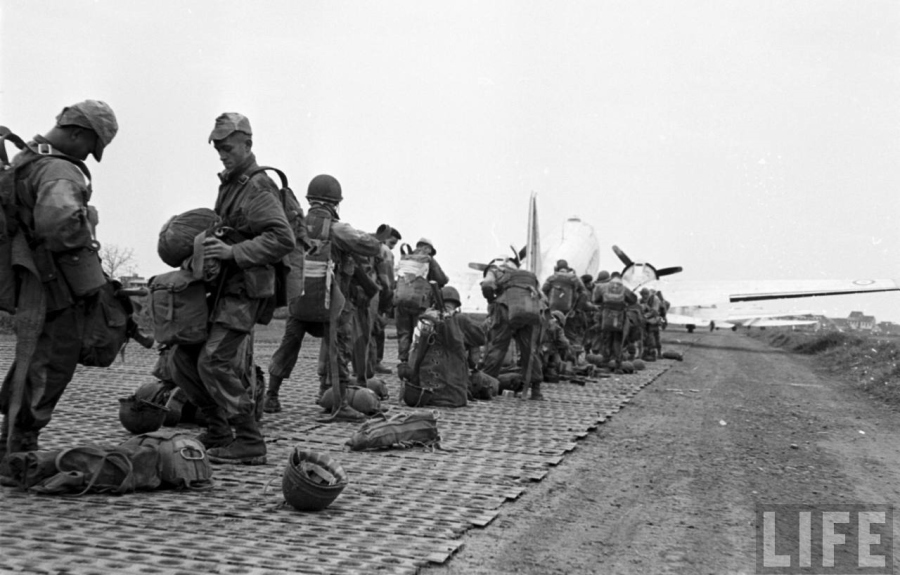
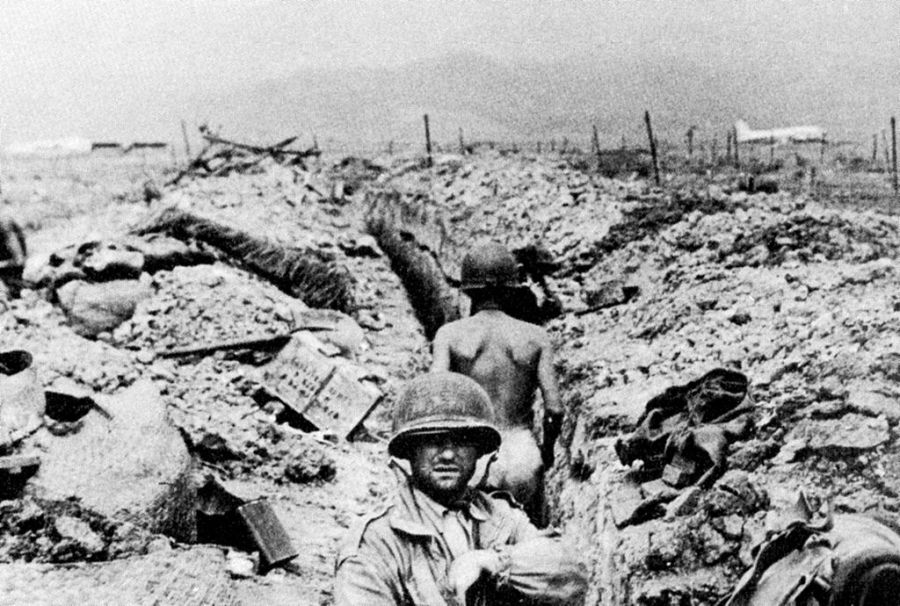
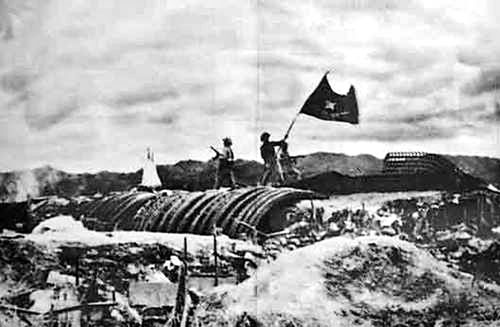

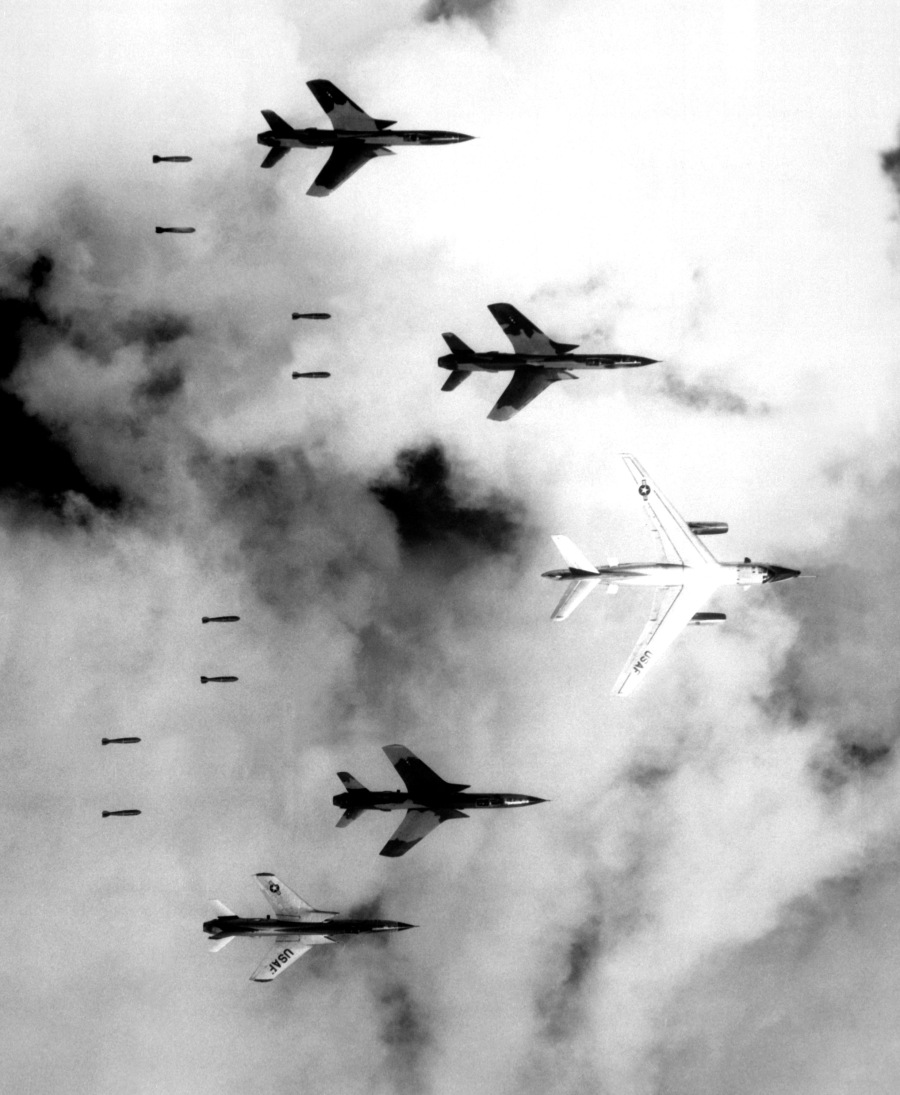
The Vietnam War really ramped up in 1961 to 1962. The United States and her allies including Australia, New Zealand and South Korea started to commit more troops to the conflict and remained fighting there until 1972 when the majority of troops were withdrawn following major communist losses in battle during the Tet Offensive of 1968.

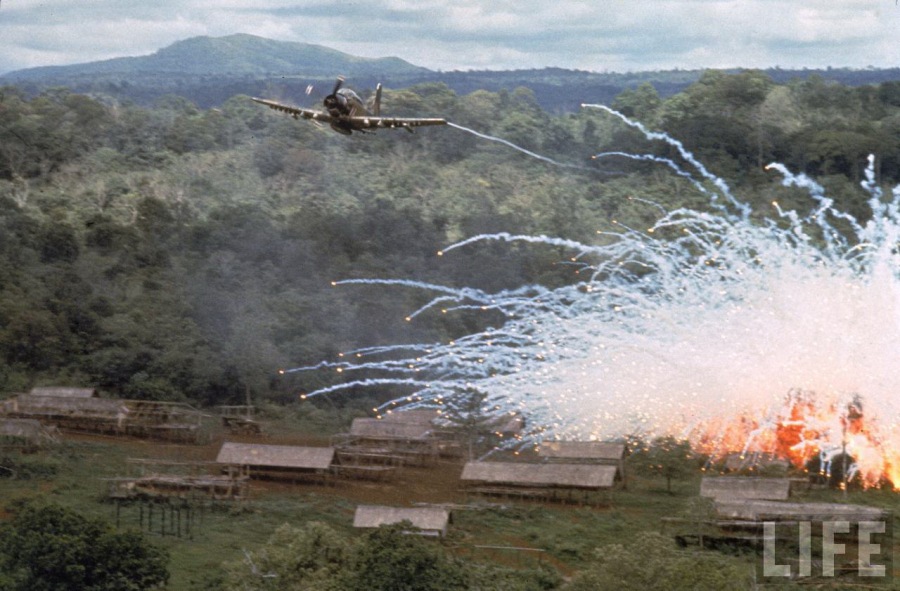
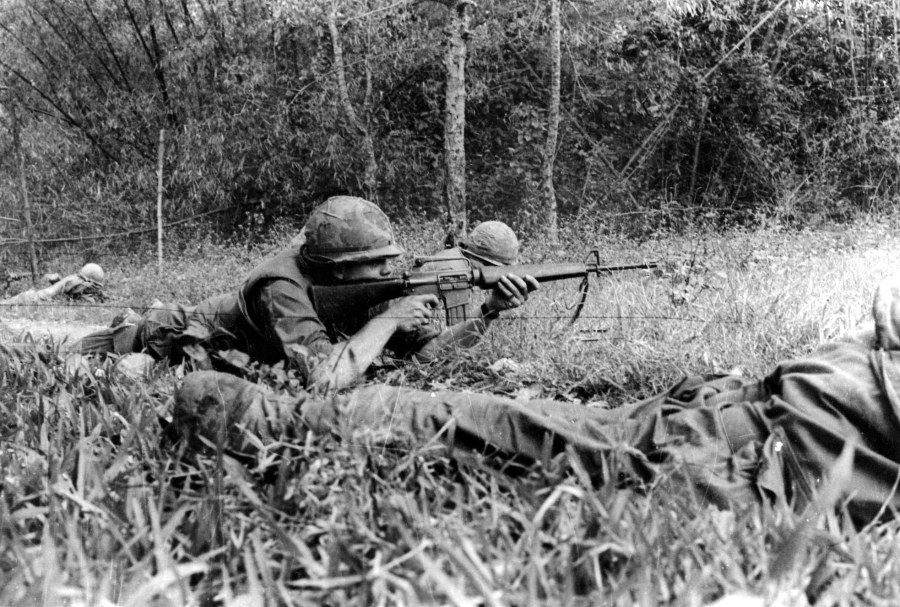

Despite the Paris Peace Accords of 1973 the communist forces from North Vietnam had not really stopped their offensive and the failing South Vietnamese government continued to fight on in a losing campaign until the fall of Saigon on April 30th, 1975. The rest is history, but many visible reminders of the war remain in the towns and cities of Vietnam in the form of memorials, museum displays and the detritus of war: the wreckage of tanks, aircraft and equipment strewn across the country.


I travelled extensively through Vietnam for a couple of months in 2010. My travels including visiting sites of historical military significance to Vietnam (North and South), France, the United States and my own home, Australia. During my travels I came across the wreckage of various aircraft (mainly operated by the United States and South Vietnam). Many were piled up as a sort of war trophy and memorial combined. Given this is an aviation site I am going to mainly focus on the aircraft wrecks which make for a somewhat intriguing experience and makes you ponder questions such as what happened to the crews that flew these aircraft?
HANOI
Air Defence Museum
This museum has displays and weaponry from the air defence units of the North Vietnamese military. The wreckage of shot down USAF Boeing B-52 Stratofortress bombers are within the museum grounds.


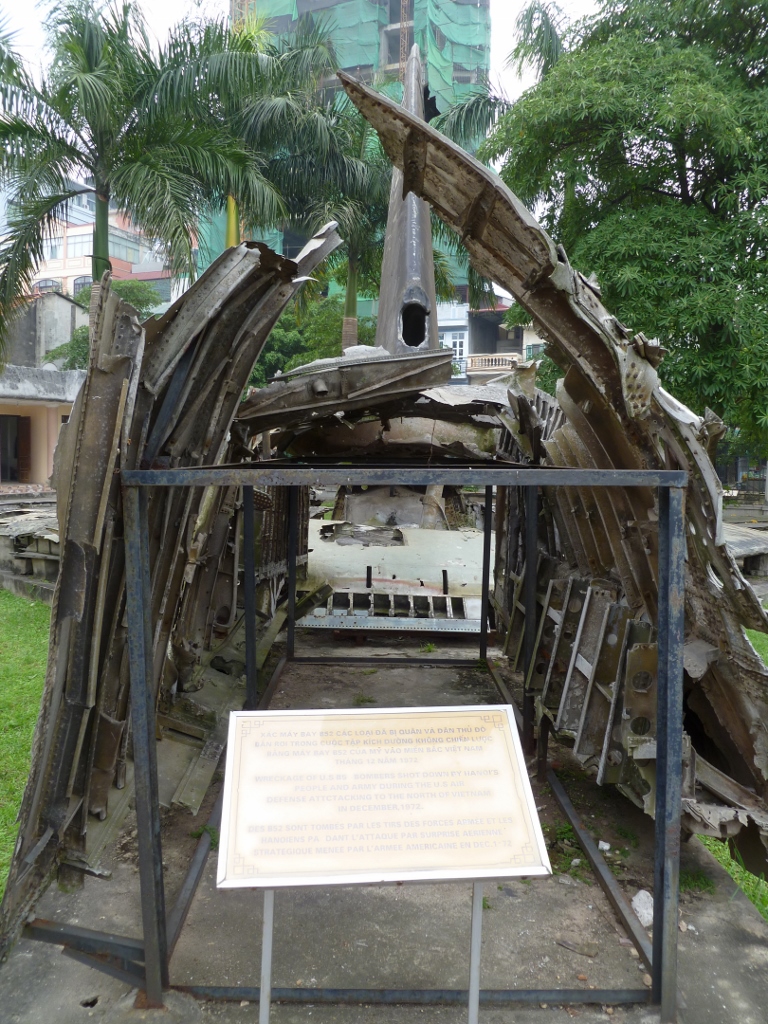


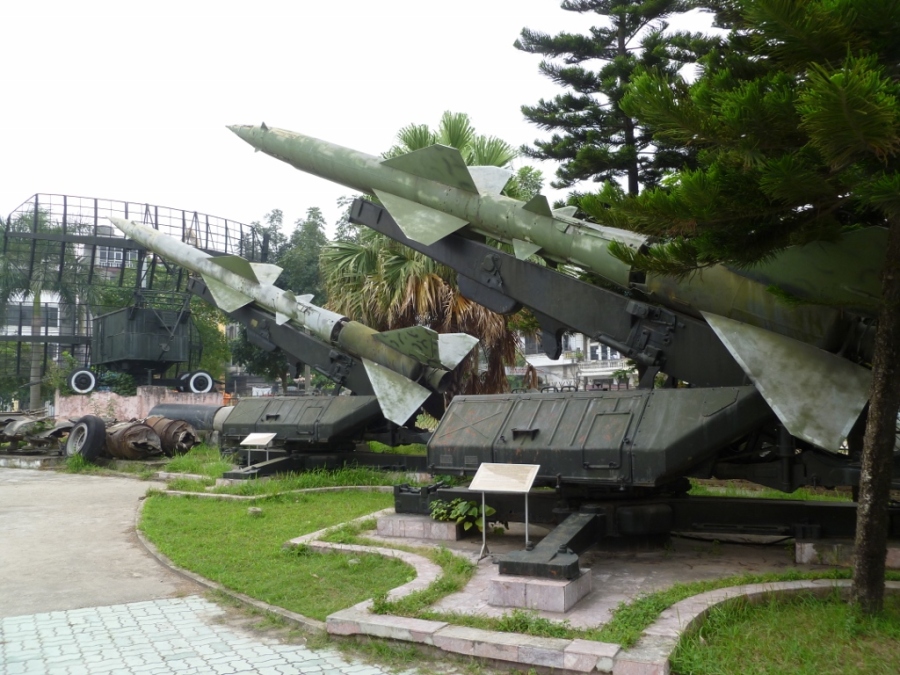
Army Museum
The Army Museum in Hanoi displays military equipment used by the North Vietnamese from tanks and artillery to aircraft. They also have on display captured South Vietnamese aircraft and a monument made out of wrecked parts of French, USAF, US Navy, US Army and South Vietnamese aircraft shot down over North Vietnam.
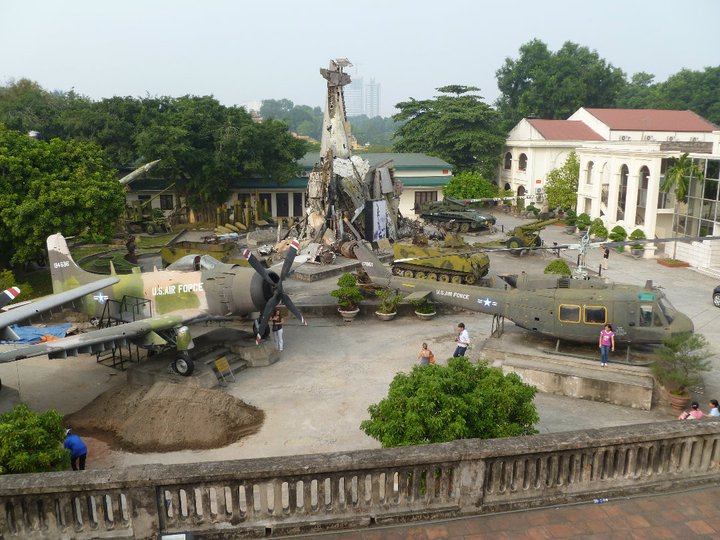
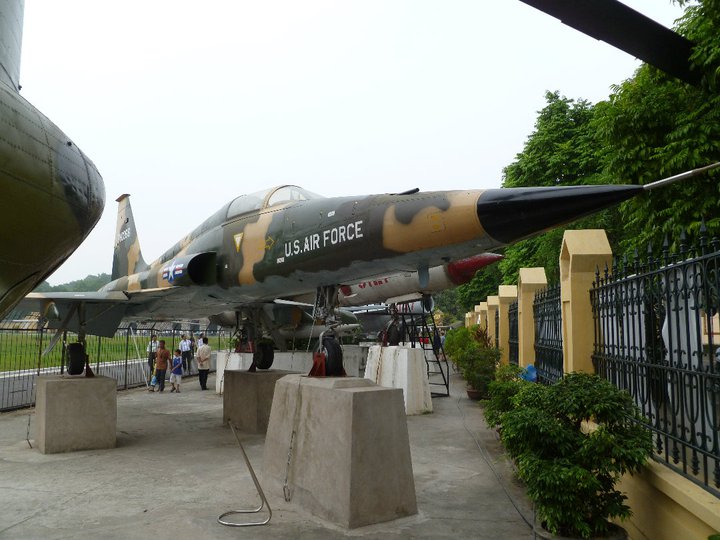
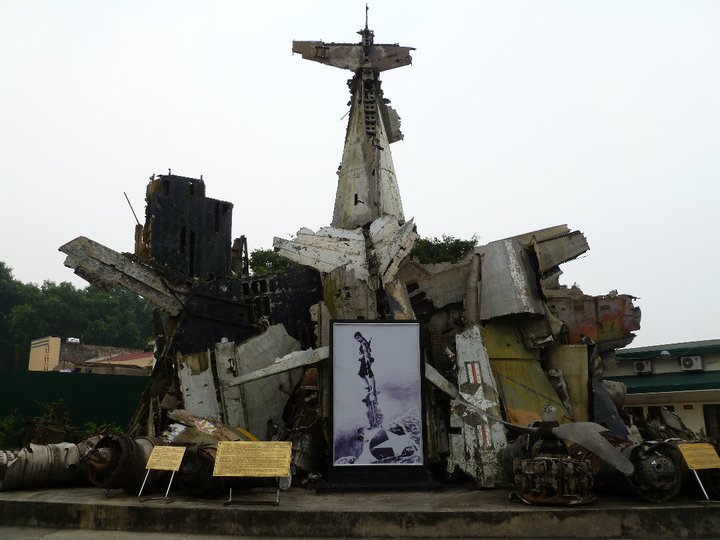




B-52 Lake (Huu Tiep Lake)
This small lake contains the wreckage of a USAF B-52 bomber shot down over Hanoi in 1972. The information on a sign at B-52 Lake is an interesting read for many reasons not just the for the “anti-imperialist” propaganda!

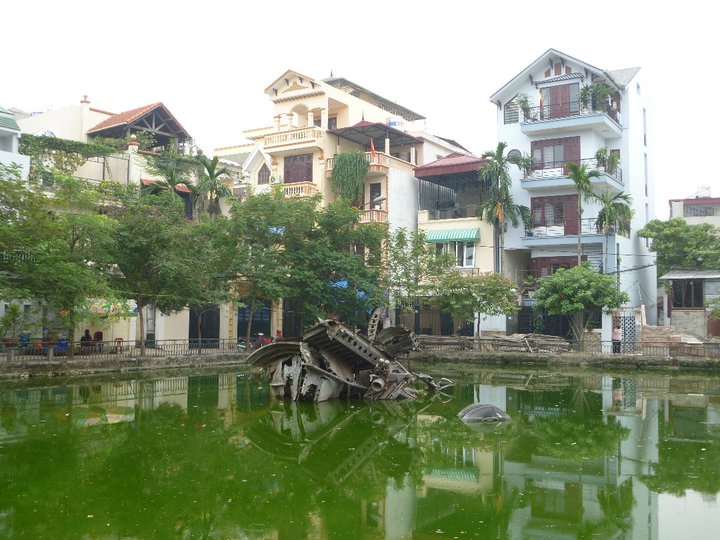

The information is slightly incorrect though in that the B-52 was a D model not a G. USAF information indicates a different date too, but from what I have read only one B-52 was lost over Hanoi during Operation Linebacker II (bombing campaign of North Vietnam December 18th to 29th, 1972) and that was “Rose 1” a B-52D (No. 56-0608) lost on December 19th, 1972 over Hanoi after being struck by a North Vietnamese SAM.
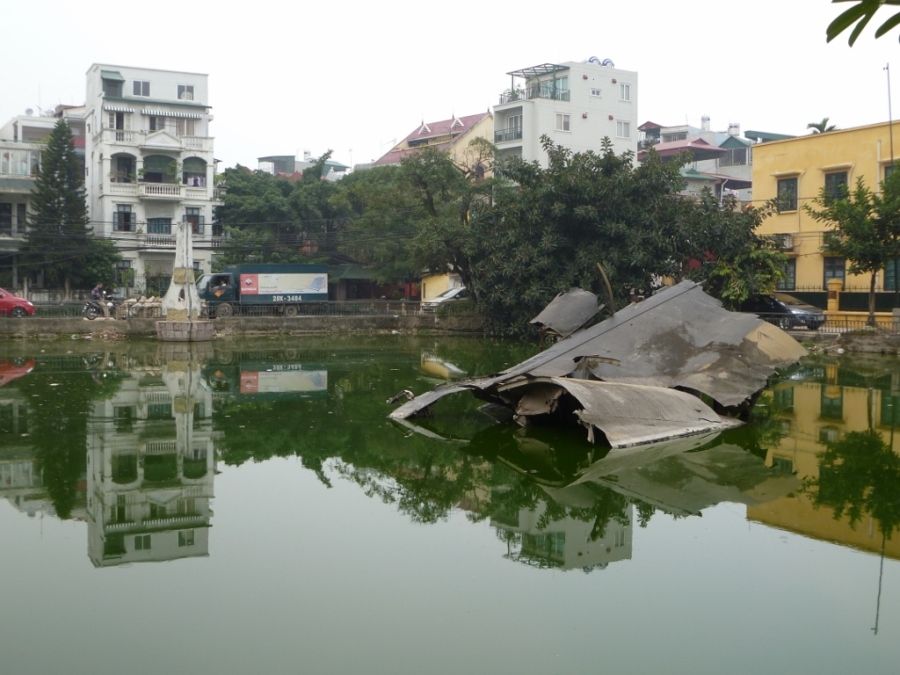

The B-52 was based out of U-Tapao air base in Thailand. 4 of the crew were captured and became POW’s (Captain Hal Wilson – Pilot, Captain Charles Brown – Co-Pilot, Major Fernando Alexander – Radar Navigator and Captain Henry Barrows – Electronic Warfare Officer), the other 2 unfortunately died in the crash (Captain Richard Cooper – Navigator and Technical Sargeant Charlie Poole – Gunner).
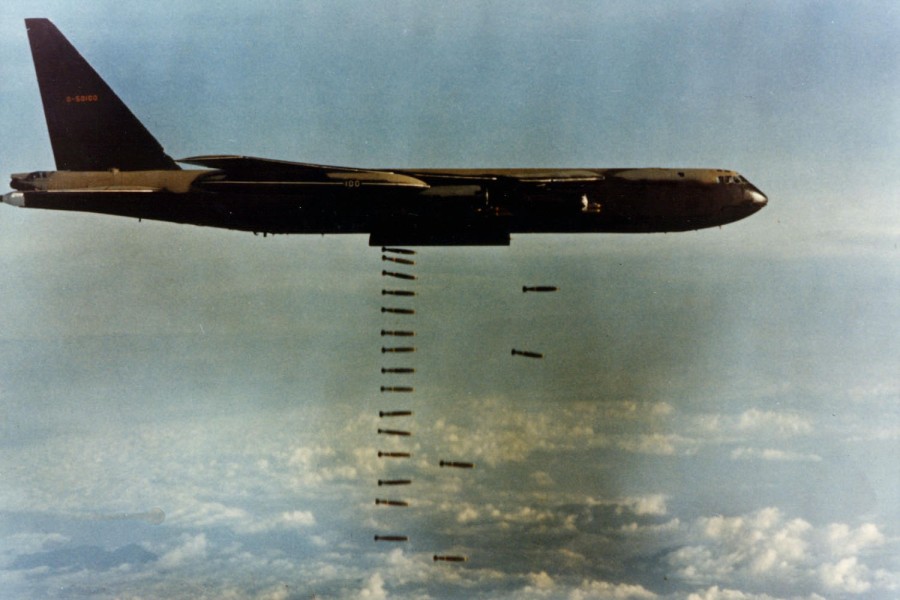
Vietnam People’s Air Force Museum
The VPAF Museum displays the history of the air forces of North Vietnam and the unified Vietnam. Numerous soviet origin aircraft are on display along with captured South Vietnamese fighters and helicopters that were used by the VPAF along with the wreckage of various US aircraft including the unmistakable airframe of a US Navy McDonnell Douglas F-4B Phantom II multi-role fighter (No. 153001 crashed on May 14th, 1967 during a SAM/AAA suppression mission near Than Hoa – said to have been caused due to an issue with one of their Zuni rockets. The crew LCDR Charles E. Southwick and LT David J. Rollins of VF-114 both ejected and were captured, remaining POW’s until March 4th, 1973).

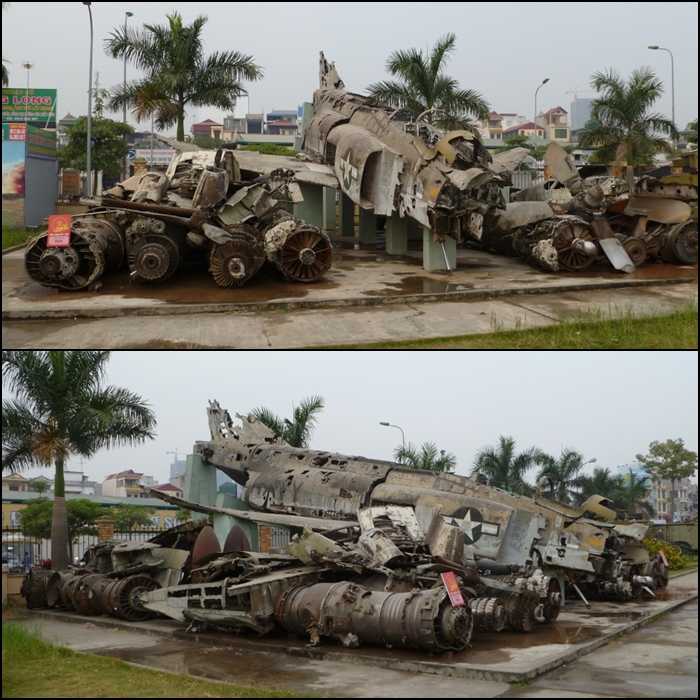
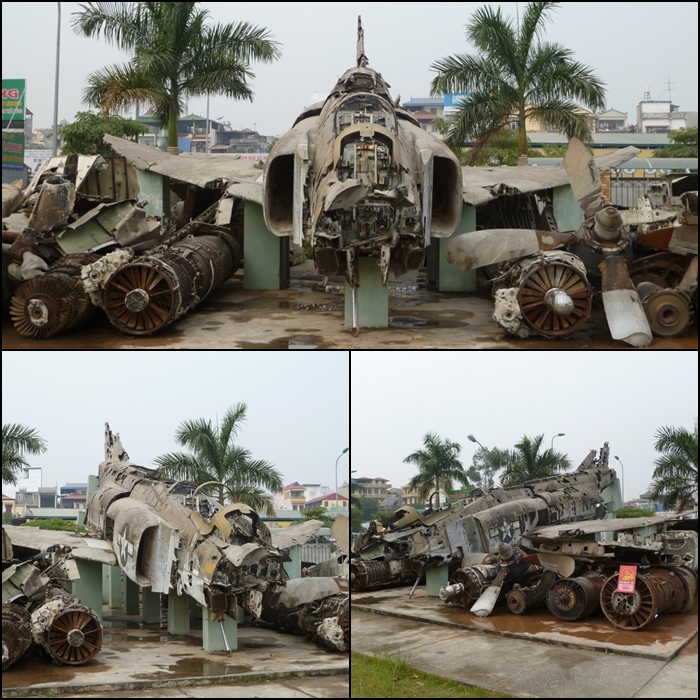
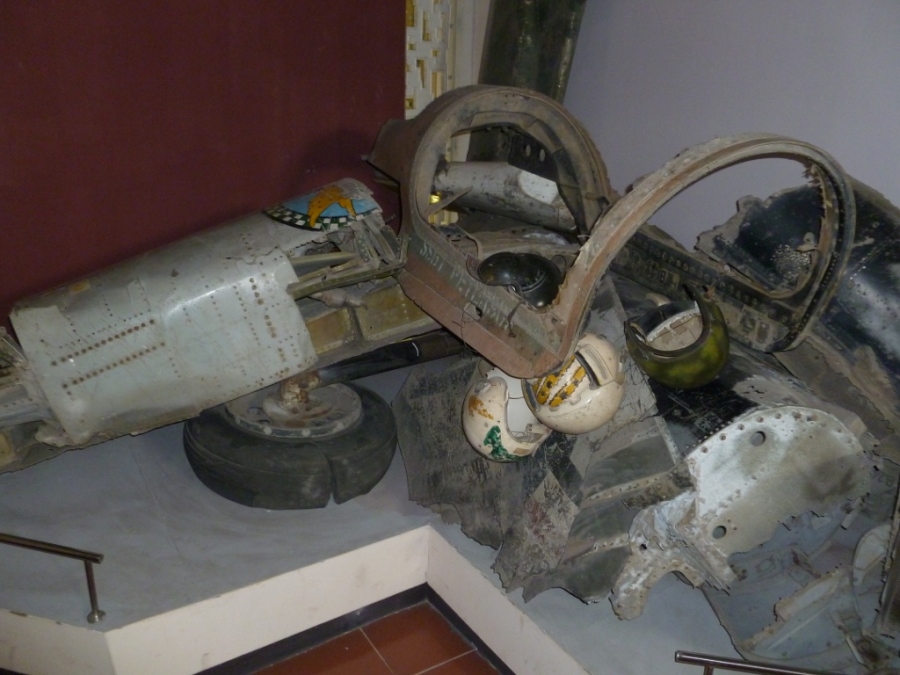

KHE SAHN COMBAT BASE (DMZ)
The famous former US Marine Corps and South Vietnamese military base near the Laos border was the target of a massive artillery bombardment and 77 day siege by North Vietnamese forces in 1968. This was also a diversion for the start of the Tet Offensive by the North Vietnamese Army and Viet Cong guerillas in South Vietnam. Today just a few remnants of the base remain along with some captured equipment and helicopters.

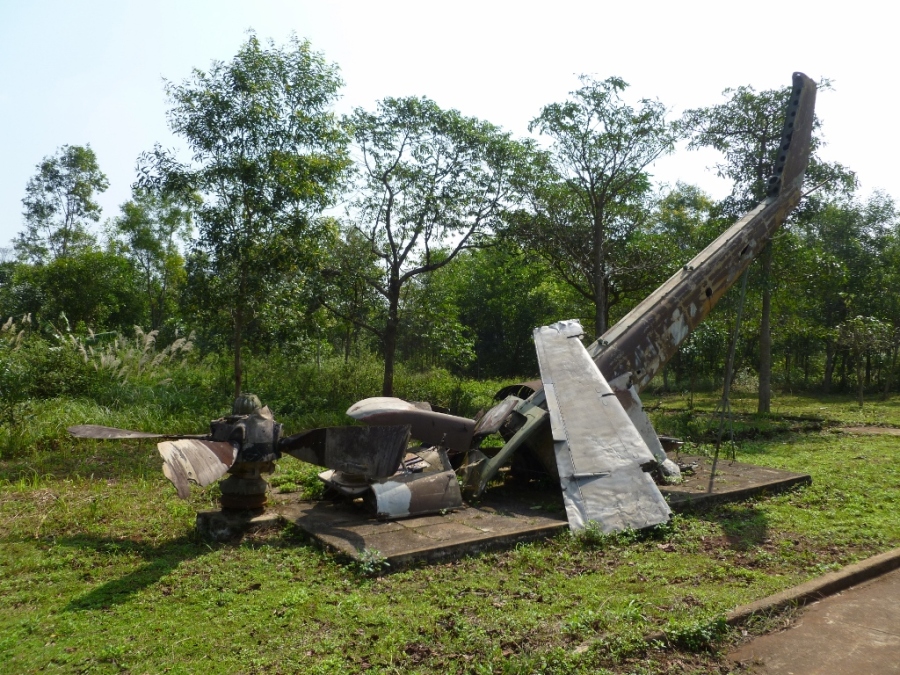
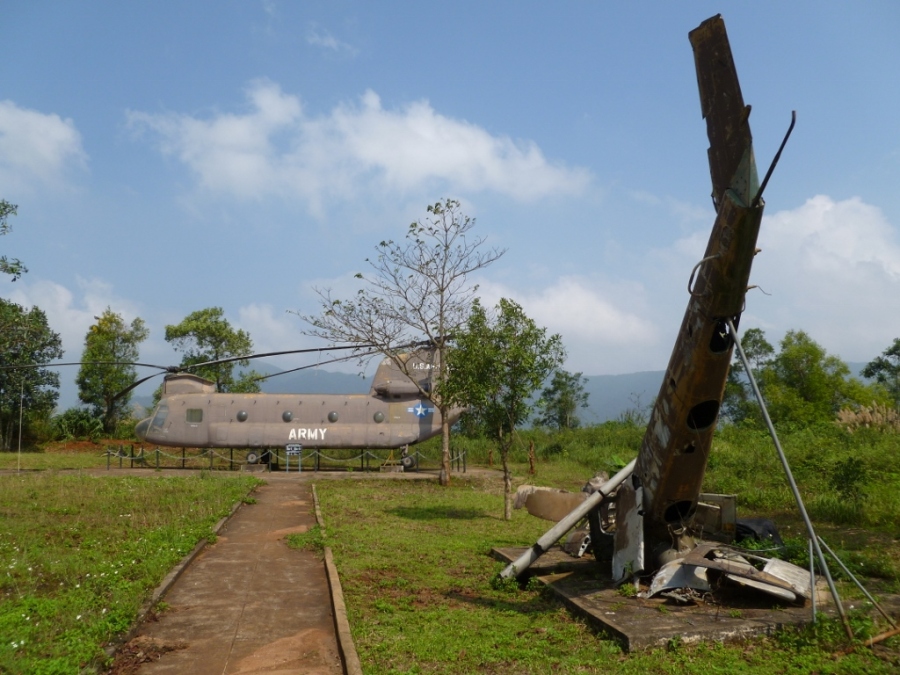
HO CHI MINH CITY (SAIGON)
War Remnants Museum
This War Remnants Museum is the major military museum in Ho Chi Minh City (Saigon in the former South Vietnam). Here you can find numerous captured US and South Vietnamese aircraft and equipment. There are lots of “anti-imperialist” messages in the information signs around the museum. These are kind of amusing in this day and age, especially with all the consumerism and capitalism in a communist run country!
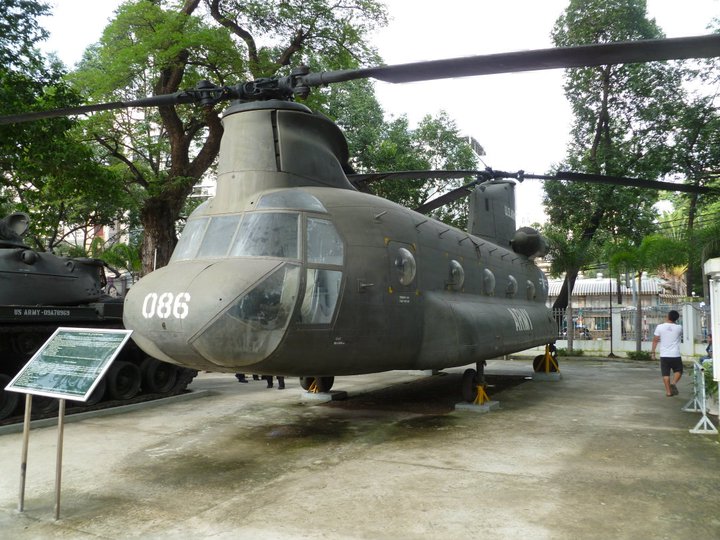

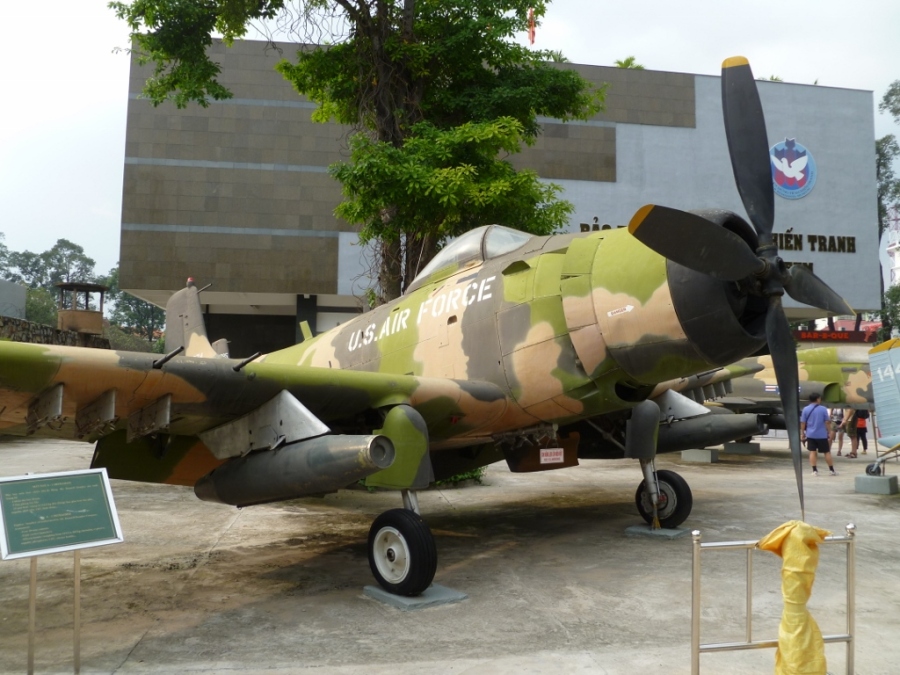
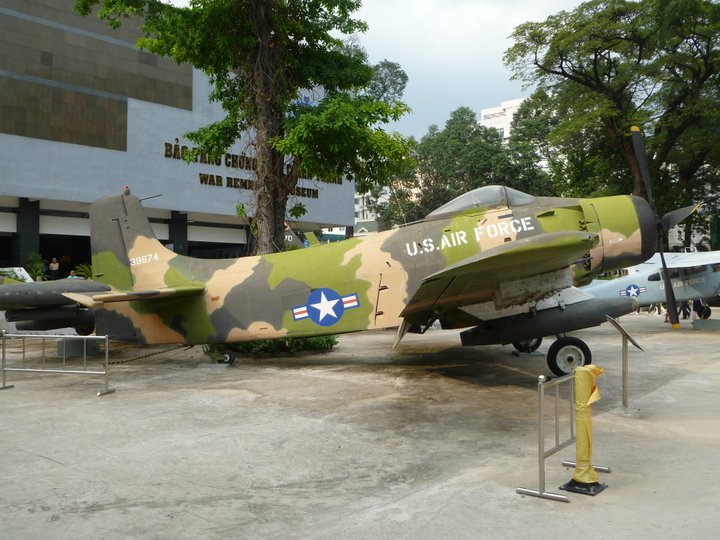
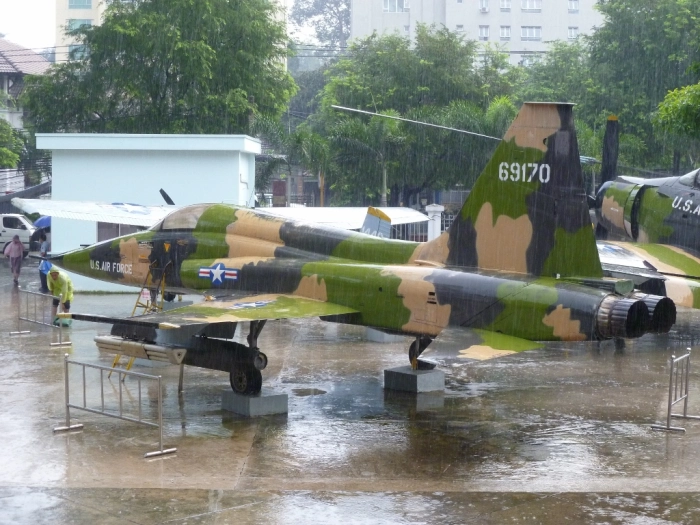
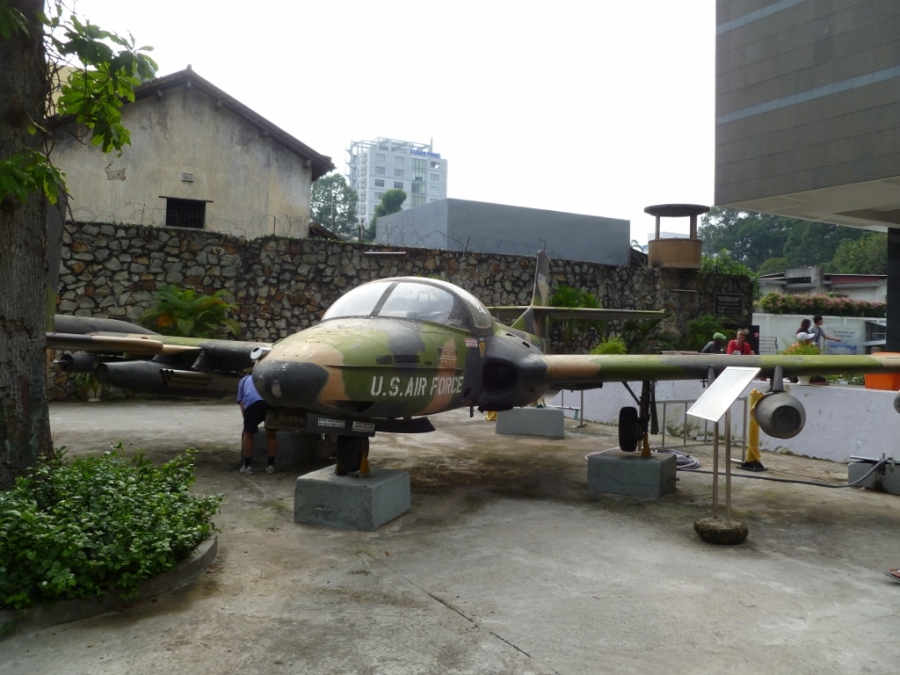
Military Museum
A small collection of vehicles, tanks, equipment and artifacts used by the North Vietnamese including captured equipment and aircraft wreckage. One of the T-54 tanks that burst through the Presidential Palace gates during the fall of Saigon in 1975 is also on display.
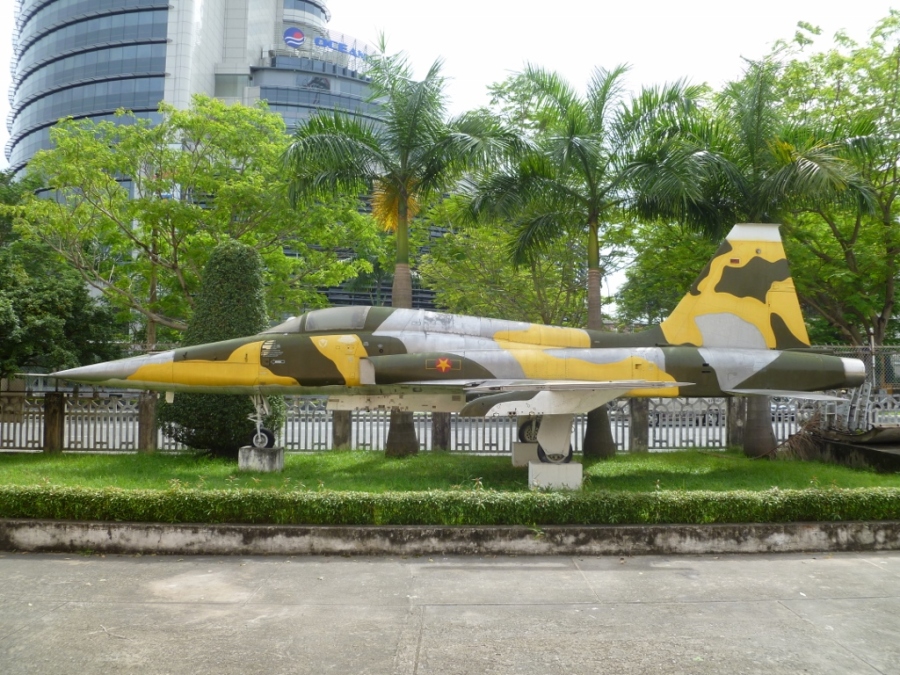


I can only imagine what wreckage still lays out in the forests and mountains across Vietnam. War memorial or war trophy these aircraft represent a major conflict of the Cold War and one that should never be forgotten. Lest we forget.
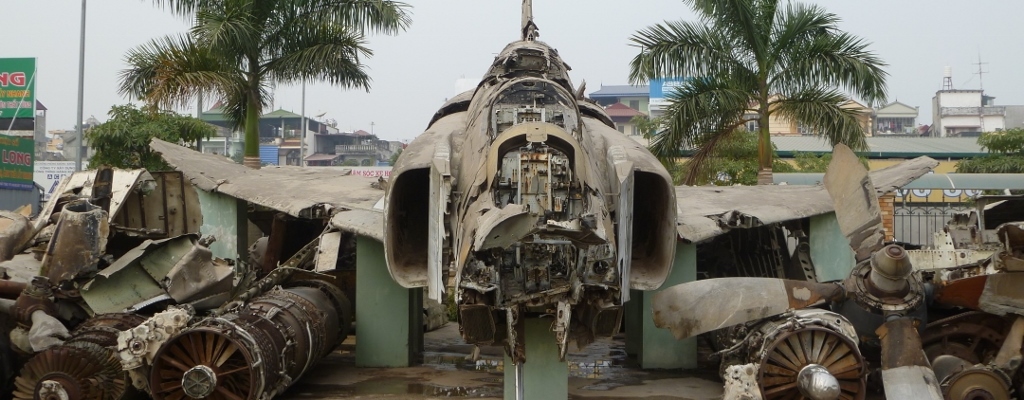
Impressive time travel
LikeLiked by 2 people
Reblogged this on Lest We Forget and commented:
Impressive time travel
LikeLiked by 1 person
That these pictures may not be forgoten .
LikeLiked by 1 person
It’s difficult to see these aircraft on display in Vietnam. I guess I mean to say it’s disappointing that the South Vietnamese allowed them to be captured in tact. I guess they were too busy trying to flee the country.
LikeLike
Yes they most certainly had other priorities on their minds! Actually for a period after the war the North Vietnamese operated aircraft like the F-5 and A-37 that they had captured. Some also naturally ended up being sent to the Soviets for evaluation.
LikeLike
This is so hard to watch. Wreckage of great men’s aircraft, piled up like some kind of trophy. Brave men fought and died in those machines, but now, their brave sacrifice is dishonored, by displaying their destroyed machines to the world. The part about the “Imperialist” B-52 being shot down makes me very disappointed. These people think that the US was their enemy, but in reality, it’s the communist regime who brutally tortured it’s own people. Want to know what happened to those pilots? They were most likely executed, killed in the crash, or tortured to no end.
LikeLike
Unfortunately when you run the country you can portray history how ever you like. Today though tourists are very welcome from any country as long as you bring your money!
LikeLike
The only thing missing in Hanoi is the full size statue of Jane Fonda with the antiaircraft gun crew.
LikeLike
Ha! Alas you are not wrong!
LikeLike
[…] the amazing website of AcesFlyingHigh & can follow on Facebook […]
LikeLike
Well we were winning when I left! It really hurts to see what was a maybe naive but strong commitment from a lot of people in the armed services put to shame by some commies!
LikeLiked by 1 person
Thanks for your service John. You have my respect. I met many Aussie veterans during my time there. They all said it was strange going back after all those years but they had been made very welcome
LikeLiked by 1 person
The United States had no business involving itself in a civil war, a lesson it seems to never learn. To the victors belong the spoils. Young lives wasted for nothing, still happening in Iraq and Afghanistan.
LikeLike
Unfortunately lessons seem to never be remembered too well when it comes to history. The Korean War (UN, Chinese and Soviet intervention), 1979-1989 Soviets in Afghanistan, 1979-1989 Vietnamese in Cambodia, 1979 Third Indochina War (Vietnam and China) and then all the modern conflicts with international intervention in SE Asia, the Middle East, Africa and Europe…
LikeLike
Agree! A total waste of blood and treasure!The draft dodgers did the right thing! Why come back home in a body bag for nothing! Like everything else, it was all about money, i.e. the military industrial complex making billions of off death and destruction! We have to learn to mind our own business! What would we do if Vietnamese were marching down our streets telling us how to govern and what to do!
LikeLike
absolutely correct
LikeLike
Dear Fred, so agree with you.
But my theory is that JFK, who was against the whole thing, was taken out because “they” wanted to get into the Vietnam War. Look at the money the war industry made!! And yes, at the cost of the young lives.
Just also think about the movie Fahrenheit…… there you clearly see who is benefiting from the Iraq war…..the same “they”.
LikeLike
As part of this new Obama arms agreement, I think all US remnants should be returned.
LikeLike
Alas I think they are long lost to the US now
LikeLike
[…] via […]
LikeLike
[…] via […]
LikeLike
Interesting side note are the murals on the side of some buildings in Hanoi depicting where AA guns knocked out an American jet.
LikeLike
I didnt notice those. Wish I had!
LikeLike
Early in 1975 I was a young Army private, stationed in Germany. Somewhere around the end of April or early May I was sent, along with about 10 others from my Battalion, to our HQs in Ludwigsburg. We were trained – but not expert – in vehicle recovery/demolition. We had all learned the very basics of how to blow up equipment in our Advanced Individual Training (AIT) following Basic, but never put that knowledge to practical use. Now, we were being alerted to the distinct possibility that we were going to go to Vietnam, most likely Saigon, in the midst of a mass evacuation of troops, to destroy the equipment that was being left behind. We literally lived in the dayroom of our Battalion HQ for 3 weeks while waiting for events to unfold and get our “go” order. As it turned out, the North overran Saigon so quickly that the decision was made not to send us after all. Can you picture – a bunch of very “green” troops, mostly privates, heading into the same regions that seasoned vets were running AWAY from, to blow up sundry tanks, small arms, and aircraft…. What could possibly have gone wrong?
LikeLike
Hi Curt, thanks for sharing. Thats an interesting behind the scenes (so to speak) moment in history. Glad it didnt come through. What a disaster that would have been!
I have been told similar things by servicemen during the Yugoslav wars when the F-117 was shot down.
LikeLike
I’ve fought in 3 wars in 30 years service. I won’t go back to any of those countries. I wasn’t in when Vietnam was flaring, but I am fascinated by it. Figure that one out. When I retire I am going to spend a month there, looking, feeling and reflecting.
The so called domino effect will always interest me.
Do you think with China calling the shots the US and Vietnam may eventually fight together? It’s a rapidly changing world out there.
LikeLiked by 2 people
Thsnks for your service David. Vietnam is a fascinating and at times a frustrating place to travel in. Glad I wasnt born until the fighting was almost over there though! There is no love lost between Vietnam and China – a long history, so you never know (I hope we never find out though)!
LikeLike
I was COMPANY MANAGER for SALLY (SALLY) THE VIKING LINE , OFFICIALLY UPGRADED from 6th to 7th CATEGORIES from 1981 to 1997 and MY FATHER was FREIGHT DIRECTOR: THE LIBERATION of SAIGON in 1975. from MR JOEL ALBIN
LikeLike
north korea
LikeLike
Hope it never happens again in that region
LikeLike
I am from NZ and now live in Vietnam.The people are wonderfull and have endured many conflicts ie Dutch,english French and the the usa.Looking and living with these friendly people,it makes me wonder why we were even fighting them.The only time Vietnam attacked its neighbour was when pole pot in Cambodia killed thousands of Vietnamese.The UN didn’t get rid of pole pot,it was Vietnam.China also attacked Hanoi as the usa was pulling out of Saigon and was given a bloody nose.I cand tell you.The Vietnamese are a force to be reconed with,if stirred.They really,really hate the chinese
LikeLiked by 1 person
Differing ideologies in the Cold War, what a mess! Yes they are a tough and committed people. The war with China is little known but was pretty intense at the time. Pol Pot, now there was a scumbag to say the least!
LikeLike
I really just stumbled upon this page , but I’m glad I did !
All your comments are just as interesting as the exhibits.
Rgds
LikeLiked by 1 person
I have a facination with things military. After WW1&2, Vietnam is next. So enjoyed your show. Awesome
LikeLiked by 1 person
Thanks Alain!
LikeLike
A total waste of blood and treasure! If the generals ran the war instead of the clueless crooked lying politicians, the outcome would’ve been much different! We were so afraid of the spread of communism! Today, Vietnam is one of our trading partners!
LikeLiked by 1 person
It is amazing how the state of the world changed
LikeLike
Yes chaps so true. In South Africa we had our border war, geographically fought between Angola and South West Africa (now Namibie). Also fighting to keep the Cubans and Communists out of Southern Africa.
Same outcome…..had to withdraw due to world political pressure and walk away.
Today, South Africa is just another Third World crime ridden, corrupt country – where politicians rape the masses who voted them in.
LikeLike
Sad state of affairs
LikeLike
Such an interesting museum. I should visit it next time in Vietnam. Thank you for the excursion and the lesson of history.
LikeLiked by 1 person
Thanks. There are plenty of interesting museums to explore across that land 🙂
LikeLiked by 1 person
My grandfather was one of the lucky people to escape from Saigon. I wish the vehicles were painted in their original South Vietnam markings instead of the US. It sucks how they use the vehicles as trophies instead of respecting the men who fought and died on both sides. I heard Poland recieved some F-5s and some hellis. They were captured from South Vietnam, have been repainted in their original SVAF colors, and are on display in Krakow Aviation Museum. Cheer to them!
LikeLiked by 1 person
Lucky indeed. Yes definite war trophies but some are displayed in VPAF markings. Yes I have seen South Vietnamese F-5’s in both Poland and the Czech Republic.
LikeLike